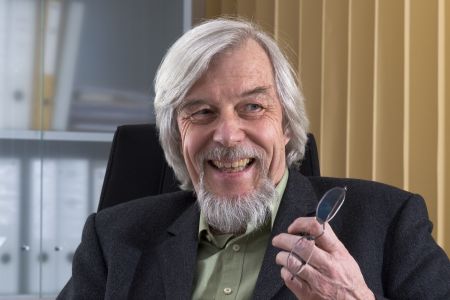
Rolf Heuer, the Director General of CERN, welcomed back CERN personnel and users after the holiday period, at the annual New Year’s presentation held on 11th January.
The LHC
Heuer opened the talk with congratulations to all the accelerator facilities at CERN for another excellent year. He drew particular attention to the excellent performance of the LHC, highlighting the role of periodic machine development phases and technical stops that improved the performance over the course of the year.
In a year in which many luminosity records were broken, it is easy to forget that the LHC has to provide collisions for two high-luminosity experiments (CMS and ATLAS), one low-luminosity experiment (ALICE) and one experiment requiring level luminosity (LHCb). The LHC team has high standards to live up to in the New Year.
2012 will present new challenges, with the expectation that the LHC will operate at 4 TeV per beam, to be compared with the 3.5 TeV per beam used until now. Although a modest increase in energy, it would bring substantial benefits in the probability to find signs of new physics. A decision on the operating energy will be reached at the annual meeting at Chamonix, to be held in early February. Over 148 days of physics foreseen for 2012, the machine is estimated to provide around 10 fb−1 (inverse femtobarns) of integrated luminosity to CMS with a bunch-spacing of 25 ns or around 16 fb−1 if a 50 ns bunch-spacing is chosen. This is to be compared with the ~5 fb−1 at 50 ns in 2011. “I’m sticking out my neck – we will have a discovery this year: Either we will find the Higgs or rule it out,” said Heuer.
Spotlight
“CERN is attractive, and CERN is in the spotlight.” He added, “The value of CERN is increasingly being recognised.” Citing the neutrino time-of-flight measurement by the OPERA collaboration, whose neutrinos were provided by CERN, Heuer said, “There was great interest not only by scientists, but also by the general public.”
Closer to home, the excitement surrounding the search for the Higgs boson meant that when the 13th December seminar was announced, CERN was immediately approached by dozens of interested journalists who wanted to cover the event, resulting in hundreds of articles and news items in the world’s media. He said: “CERN and its research have captured the imagination of the general public. Newspapers are now talking about number of sigmas, evidence, how long it takes to make a discovery – they are starting to learn how science is done!”
CERN also played host to 52,000 visitors to the Globe in 2011, while 75,000 people participated in half-day guided tours to the CERN sites. There were also 196 VIP visits and 1112 participants to the CERN Teachers’ Programme. All of these are dramatic increases on previous years. “The increasing demands mean that more help is needed,” Heuer appealed to the audience. For more information on volunteering for CERN visits, you can contact Mick Storr.
With the world’s eyes on CERN, the laboratory must continue to deliver on scientific promises, the Director General said, but must also show its relevance to society by engaging with culture. CERN is now involved in arts projects realised through external funding, under the Collide@CERN banner. “The idea was to collide scientists and artists and see what emerges.”
Towards a global laboratory
CERN is opening up the possibility of membership to countries outside Europe, with Israel and Serbia as the most recent countries to take important steps toward membership. New relations are being forged with international organisations such as UNITAR, WIPO and WHO. Existing relations with the communes surrounding CERN are being improved, with the introduction of projects such as Passport Big Bang.
“CERN is evolving into a global laboratory and will continue to produce excellent physics results.”
From the point of view of CMS, with the LHC scheduled to restart soon, maybe operating at higher energies than ever before, we can look forward to a very exciting and challenging 2012.
— Submitted by Achintya Rao
- Log in to post comments

